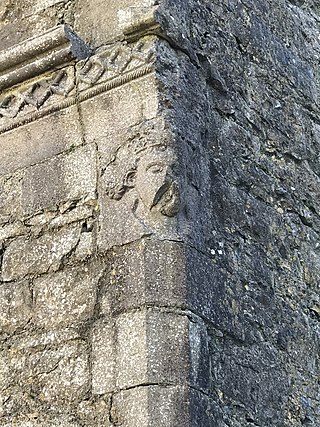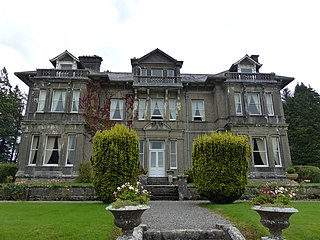Other
- Cathal Ó Conchobair, 14th-century Irish bishop
- Cathal O'Connor Faly, 16th-century Irish rebel, known as Don Carlos
Cathal O'Conor was king of Connacht from 1280 to 1288.
Cathal O'Connor or Cathal O'Conor may also refer to:

Ruaidrí mac Tairrdelbach Ua Conchobair was King of Connacht from 1156 to 1186, and High King of Ireland from 1166 to 1198. He was the last High King of Ireland before the Anglo-Norman invasion.
Conchobar (Old Irish pronunciation:[ˈkonxovar] is an old and famous Irish male name meaning "lover of canines". It is the source of the Irish names Conor, Connor, Connors, Conner, O'Connor, etc. It is a name borne by several figures from Irish history and legend, including:
Conchobar Maenmaige Ua Conchobair, son of High King of Ireland Ruaidrí Ua Conchobair, was King of Connacht from 1183 to 1189. He was a military commander and opponent of the Norman invasion of Ireland.

Cathal Crobhdearg Ua Conchobair (1153–1224), was a king of Connacht. He was the youngest son of the High King of Ireland Tairrdelbach Ua Conchobair and brother to the last fully recognized High King Ruadri Ua Conchobair. His own sons Aedh Ua Conchobair and Feidhlimidh Ua Conchobair were kings of Connacht after him.
Conchobar mac Tadg, King of Connacht 967–973 and eponym of the O'Conor family of Connacht.
Felim McHugh O'Connor was king of Connacht in Ireland from January 1310 to 10 August 1316. The beginning of his kingship saw a revival in the ancient form of inauguration performed for the Kings of Connacht after a period of apparent lapse in the practice. His reign took place against the background of a Gaelic recovery following the Anglo-Norman invasion and the disputed High Kingship of Edwurd Bruce. He was the last King of Connacht to truly hold power over the entire province and his death halted the gains that had been made following the Anglo Norman invasion, by his kingdom. His foster father Maelruanid Mac Diarmata King of Magh Lurg would play an instrumental role in his reign.
Hugh McHugh Breifne O'Conor was king of Connacht, Ireland, in 1342. He was the last of the Clan Murtagh O'Conor to hold this position. He died in 1350, as the O'Connor Breifne, some eight years after being expelled. His father, a son of Cathal O'Connor had briefly made a bid for the kingship in 1309-10 from a power-base established in Breifne O'Rourke.
Cathal Carrach Ua Conchobair, anglicised as Cathal Carragh O'Conor, was king of Connacht from 1189 to 1202.
Ó Conchobhair Sligigh is a Gaelic-Irish family and Chief of the Name.
Brian Luighneach Ua Conchobhair was a prince of Connacht.

The O'Conordynasty are an Irish noble dynasty and formerly one of the most influential and distinguished royal dynasties in Ireland. The O'Conor family held the throne of the Kingdom of Connacht up until 1475. Having ruled it on and off since 967, they ruled continuously from 1102 to 1475. Moreover, the O'Conor parent house the Uí Briúin and Síol Muireadaigh ruled Connacht on many occasions – but not continuously – between 482 and 956. The house of O'Conor also produced two High Kings of Ireland, Tairrdelbach Ua Conchobair and his son Ruaidrí Ua Conchobair, the last High King of Ireland. The family seat is Clonalis House outside Castlerea in County Roscommon.
Denis Armar O'Conor, O'Conor Don was hereditary Chief of the Name O'Conor, and is a direct descendant of Tairrdelbach Ua Conchobair, the last High King of Ireland with a surviving male-line lineage and was seen by some as a nominal claimant to that defunct position.
Cathal is a common given name in Ireland. The name is derived from two Celtic elements: the first, cath, means "battle"; the second element, fal, means "rule". There is no feminine form of Cathal. The Gaelic name has several anglicised forms, such as Cathel, Cahal, Cahill and Kathel. It has also been anglicised as Charles, although this name is of an entirely different origin as it is derived from a Germanic element, karl, meaning "free man".

Clonalis House is an historic manor house in Castlerea, County Roscommon, Ireland, and the ancestral home of the O'Conor Don, who are direct descendants of Cathal Crobhdearg Ua Conchobair, King of Connacht, a younger brother of Ruaidrí Ua Conchobair, the last High King of Ireland.
The Clan Murtagh O'Conor were descendants of Irish High-King Toirdelbach Ua Conchobair, through his son, Murtogh Moynagh O'Conor (d.1210), tánaiste of Connacht. They have been defined by Katherine Simms as:
"... the earliest, most aristocratic and best documented example of increasing nomadism in the northern half of Ireland in the late middle ages. ... In spite of the fact that they were a very numerous branch of the O'Conor family, who supplied five kings to the throne of Connacht, they seem to have vanished away in the early fifteenth century, never to be heard of again."
Fearghal Ó Taidg an Teaghlaigh, Chief of the Name, Marshal and bodyguard of King Cathal Crobhdearg Ua Conchobair of Connacht and his successor, Aedh, died 1226.
Murtogh Moynagh O'Conor, prince of Connacht, Ireland, flourished 1156-1210.
Mór Ní Briain was Queen of Connacht, and died 1218. She was a daughter of King Domnall Mór Ua Briain of Thomond. Domnall's wife was Órlaith Ní Murchadha, Princess of Leinster, daughter of Queen Mor Ui Thuathail and King Diarmaid Mac Murchadha of Leinster.
The Síol Muireadaigh or Síol Muireadhaigh, was a leading sept of the Connachta group of Gaelic dynasties in medieval Ireland. The name Síol Muireadaigh was also used to refer to the territory occupied by the group which was centered around the ancient royal site of Cruachan on the plains of Connacht in County Roscommon.